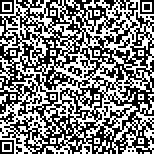下载中心
优秀审稿专家
优秀论文
相关链接
摘要

大气水汽对全球以及区域气候变化有重要的影响,精确获取水汽数据是非常重要的研究方向。TRMM(热带降雨观测计划)卫星上搭载的VIRS传感器(可见光/红外扫描仪)在降雨观测中应用广泛,但是目前很少有研究将其用于水汽反演。本文尝试使用VIRS的两个红外分裂窗通道(10.8 μm和12 μm),通过建立改进的方差协方差比值分裂窗方法进行水汽反演。首先对TRMM/VIRS数据和方差协方差比值法进行了介绍,接着针对VIRS数据特点,利用MODTRAN辐射传输模式和探空大气廓线数据模拟回归了大气透过率和水汽的定量关系,最后利用VIRS遥感数据开展了水汽反演试验。由于红外波段分裂窗水汽反演算法只适合于晴空条件下,因此在云雨识别的时候,为了保证时空一致性,采用TRMM提供的基于微波成像仪TMI的云中液态水信息来对晴空与否进行判断。水汽反演结果首先与地基GPS大气水汽观测值进行了比较,均方根误差为5.76 mm;其次和MODIS卫星水汽反演结果进行了面状对比,二者显示出了高度的区域一致性。验证结果表明,TRMM/VIRS的水汽反演结果精度较高,具有进行业务化推广的潜力,丰富了水汽数据的来源,同时也对利用风云系列卫星传感器数据进行热红外通道的水汽反演具有借鉴意义。
Water vapor plays a crucial role in atmospheric processes that act over a wide range of temporal and spatial scales, from global climate to micrometeorology. Determining water vapor distribution in the atmosphere and its changing pattern is very important. The algorithm based on some satellite remote sensors is mature (i.e., moderate resolution imaging spectra-radiometer (MODIS)). Water vapor inversion algorithms based on other sensors remain in the scientific research stage or has no corresponding water vapor algorithm (i.e., Tropical Rainfall Measuring Mission (TRMM) and Visible and Infrared Radiometer System (VIRS)). TRMM/VIRS data were widely used to study precipitation. This paper uses thermal infrared split window channels at 10.8 μm and 12.0 μm of VIRS to retrieve Precipitable Water Vapor (PWV). An improved physically based algorithm for the retrieval of PWV over cloud-free land surfaces was applied in this paper. First, the Split-Window Covariance-Variance Ratio (SWCVR) method was reviewed. The surface emissivities of the two split window channels were assumed equal. Moving window method was adopted to keep the spatial resolution of the original data. Then, an operational use of this method was developed and applied to VIRS datasets. Cloud liquid water information obtained from TRMM Microwave Imager (TMI) was used to identify the clear sky area. Given that TMI and VIRS are both mounted on the TRMM satellite, the data obtained by the two instruments are consistent in time and space and avoid data match problems. A total of 2000 radiosonde profiles were input into MODTRAN to simulate the brightness temperatures under the configuration of VIRS and find the relationship between the transmittance of the two split window channels and PWV. The profiles used in this research were randomly selected from the land sounding sites around the world to represent all kinds of water vapor condition and types of surface. The profiles were evenly distributed in the four seasons, although winter has slightly fewer profiles. Compared with the GPS results, the root mean square error of the results is 5.76 mm, and the bias is -1.2 mm for the research area. Regional consistency was found between the results obtained by MODIS and the proposed algorithm. The proposed algorithm can yield reasonable results that are accurate in most cases with a split-window technique using VIRS data. Validation results indicate that the PWV retrieved by VIRS has high precision,and has a reference meaning to China FY data for retrieving PWV based on infrared split window channels. However, the precision of the algorithm in this paper was lower than the PWV results retrieved by MODIS near infrared data. The infrared channels were sensitive to the PWV in the upper atmosphere, whereas most of the PWV existed in low atmosphere. Accuracy was almost the same between the PWV retrieved by the infrared data of MODIS and the results in this paper. Few preliminary results were obtained by the present study, but the existing algorithm can be further developed and improved to reach the degree of business.

